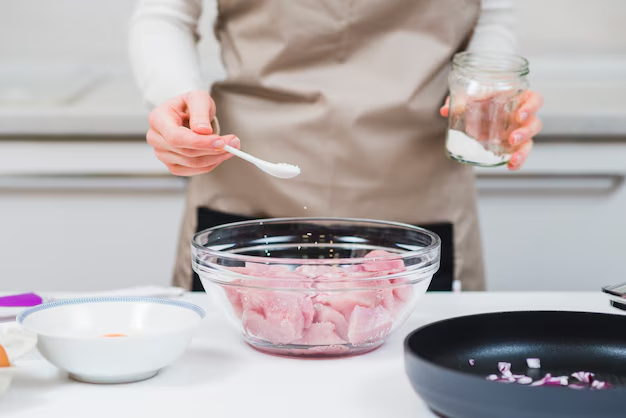How Long Does Heavy Whipping Cream Last in Your Fridge? A Comprehensive Guide
🍦 Dreaming of delicious whipped cream atop your favorite dessert? Heavy whipping cream is the secret ingredient for countless culinary delights, but how long can you keep it in your refrigerator before it goes bad? Let's dive into the longevity of heavy whipping cream, exploring factors affecting its shelf life, tips for storage, and how to tell if it’s time to bid farewell to your creamy companion.
🕵️♂️ How Long Does Heavy Whipping Cream Last?
Unopened Heavy Whipping Cream
When you purchase heavy whipping cream, it typically comes with a "sell-by" or "use-by" date. An unopened container can generally be stored in the refrigerator for up to two to three weeks past the printed date, provided it's consistently kept cold. The key here is maintaining a stable temperature to preserve freshness and quality.
Opened Heavy Whipping Cream
Once opened, heavy whipping cream’s shelf life reduces. Proper storage is crucial to extending its usability. Opened cream should be consumed within 5 to 7 days if kept refrigerated at 40°F (4°C) or below. Always ensure the cap is tightly sealed to prevent exposure to air and contaminants.
Homemade Heavy Whipping Cream
If you make your own heavy whipping cream, its life span tends to be shorter. Expect it to last about 3 to 5 days when refrigerated, as homemade varieties lack the stabilizers present in commercial products that extend shelf life.
🧊 Factors Influencing Shelf Life
Temperature Control
Keeping cream consistently cold is pivotal. Fluctuating temperatures can accelerate spoilage. Always store cream in the coldest part of your refrigerator, often found in the back versus the door, where temperatures are less stable.
Handling Practices
Every time you open the container, you expose the cream to external factors. Always use clean utensils to prevent bacterial contamination. Pour out the required amount instead of placing unused cream back into the container.
Packaging Integrity
Damaged or improperly sealed packaging can compromise cream quality. Ensure your cream is stored in its original container or transferred to an airtight, clean glass container for optimal freshness.
🔍 Signs of Spoilage: When to Say Goodbye
Smell and Texture
Spoiled cream often develops a sour smell and a thick, clumpy texture. Check for changes in odor and appearance before use. Fresh cream should have a mild, slightly sweet scent and smooth consistency.
Color Changes
While color isn't always the first indicator, any visible yellowing or darkening might suggest spoilage. Compare it to its fresh state; noticeable changes usually mean it's time to discard.
🥛 Best Practices for Extending Shelf Life
Store Correctly
- Keep it cold! Use the back of the fridge to maintain a consistent temperature.
- Seal tightly to minimize exposure to air and bacteria.
Limit Exposure
- Use clean utensils and avoid double-dipping.
- Transfer portion into a separate container if needed, rather than returning unused cream to its container.
Consider Freezing
Yes, you can freeze heavy whipping cream! Pour into an airtight container, leaving space for expansion. Thaw in the fridge when ready to use, and note that texture changes (it may separate) but is suitable for cooking or baking once beaten again.
🥧 Practical Uses for Excess Heavy Whipping Cream
Before it turns, heavy whipping cream can enhance a variety of dishes. Here are some creative uses:
- Homemade whipped cream: Perfect for a fruit topping or pie.
- Creamy sauces: Elevate your pasta or poultry dishes with rich sauces.
- Soup base: A delightful addition to creamy soups and bisques.
- Baked goods: Enhance moisture and richness in cakes or scones.
📄 Quick-Reference Summary
Here's a handy table to summarize our findings:
| Storage State | Shelf Life in the Fridge | Key Tips |
|---|---|---|
| Unopened | 2-3 weeks past date | Keep cold, sealed tightly |
| Opened | 5-7 days | Store at 40°F, use clean utensils |
| Homemade | 3-5 days | Keep in airtight container, consistent temperature |
🌟 Tidbits and Tips
- Shake it up: Before using previously frozen cream, give it a good shake or whisk to combine separated fats and liquid.
- Label it: For homemade cream, note the preparation date to track freshness.
- Batch wisely: Consider smaller containers if you notice frequent waste; this reduces overexposure with each use.
The next time you reach for your carton of heavy whipping cream, you'll have confidence in your knowledge about its storage, signs of spoilage, and delicious possibilities. With these tips, your cream will last longer—and your desserts will taste better! 🍨
